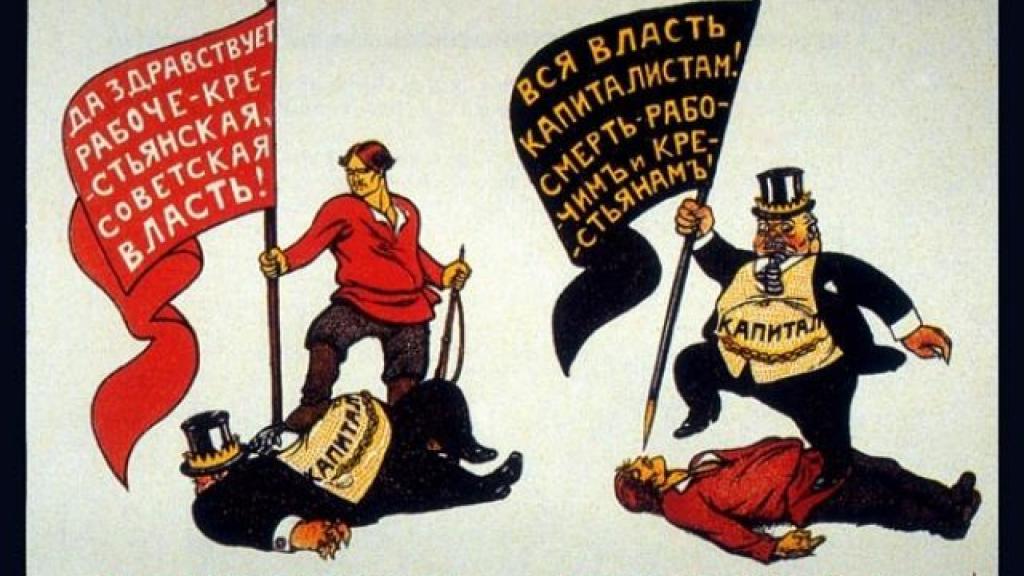Deconstructing State Capitalism
The term state capitalism does not have a single definition that is used with consistency and uniformity. The definitions that have been used depend on the context of the discussion, both historically and in terms of discipline or field, and the ideological commitments of the speaker or author. To understand state capitalism, it is necessary to survey the ways the state has shaped and participated in economic life within capitalist frameworks. Today, state actors around the world are adopting an aggressive economic strategy, investing heavily across sectors to position themselves optimally within the global capitalist system. State-owned enterprises (SOEs) have proliferated dramatically in recent years, growing in number and increasingly occupying positions as some of the top companies in the world. In the twenty-first century, SOEs have “evolved from national monopolist[s] to global players,” expanding their reach and increasingly “operating in strategic sectors – such as energy, transport, infrastructure and logistics, banking and high-tech.” As just one example, sovereign wealth funds (SWFs) have grown significantly in recent years and are now some of the largest and most important investment funds in the world. “As of February 2023, assets under management of sovereign wealth funds globally stood at $11.3 trillion, up more than tenfold in the last decade.” Governments can generally mobilize much larger sums of capital than private companies—and more quickly and easily. Governments have a range of powers that make them unique among institutional investors; they can do things like tax people, control natural resources (like oil, gas, and minerals), print and disseminate money, adjust interest rates for the entire national financial system, and apply foreign exchange reserves. With their incredible masses of capital, states exert enormous and unmatched power as investors in the global market. Their actions can impact whole industry sectors and national economies. Within the current context, the term state capitalism has been deployed as a kind of smear against China and others, to differentiate their supposedly exotic, statist-authoritarian practice of capitalism from a purer and truer Western version. It is undoubtedly true that for cultural and political reasons, China does not feel the same need to obscure or euphemize its participation in the economy. But it has become necessary to mount a critical challenge to the reproduction of “extremely problematic Eurocentric imaginaries” that present a misleading picture of a supposed contest between the “vile, authoritarian state capitalism” of the East and “a more virtuous liberal-democratic form of free-market allegedly prevailing in the West.”
The idea of state capitalism has long been associated with Marxist discourse. Notably, for Vladimir Lenin, state capitalism was promoted as an intermediate phase in which the state would participate in the capitalist system under the supervision and control of the working class. Lenin believed that the consolidation associated with monopoly capitalism would prepare the way for the socialization of production through the state. Indeed, he goes so far as to argue that under “[t]he objective process of development” it is “impossible to advance from monopolies (and the war has magnified their number, role and importance tenfold) without advancing towards socialism.” To Lenin, socialism must proceed directly from state-capitalist monopoly as the inevitable “next step forward.” “Or, in other words, socialism is merely state-capitalist monopoly which is made to serve the interests of the whole people and has to that extent ceased to be capitalist monopoly.” Ironically, then, were he alive today, Lenin could be expected to see current concentrations of wealth under global state capitalism as an auspicious indicator, the condition precedent to the advent of socialism under state administration. Many of Lenin’s socialist and communist contemporaries shared his conviction that capitalist monopolies were the path to state ownership and thus to an eventual full socialist state. At this point, some will ask: what are we to make of the fact that so many influential socialists saw socialism as monopoly capitalism perfected? At the very least, it shows that there were and are many visions of socialism—and of the paths thereto. During Lenin’s lifetime, several social, technological, and ideological developments contributed to his understanding of state monopoly capitalism as the immediate precursor to socialism. Whether or not they were actually implemented in the early Soviet Union, Lenin was influenced by ideas associated with Frederick Winslow Taylor and his Principles of Scientific Management. Taylorism emphasized the centralization and standardization of production processes, which Lenin believed would rationalize and optimize the allocation of labor resources. Lenin thought that under the control and direction of the state, these new methods and practices could be implemented to overcome the chaos and inefficiency of capitalism, creating a streamlined planned economy that would work for all. In line with the economic thinking of the time, Lenin saw gigantic scale as necessary for both attaining economies and making it possible for qualified experts in the state to manage the economy from the top down. It is important to understand Lenin’s point of view because it helps to explain the trajectory of twentieth century communism and to highlight, by contrast, some of the libertarian socialist and anarchist criticisms of state capitalism. Both the state capitalism of the West and the communism of the Soviet Union and China during the 20th century created morphologically similar structural and organizational patterns—centralized, hierarchical, bureaucratic, and ruled from the top down. Lenin’s phased framework notwithstanding, the mere fact of its ownership by the state does not make a corporate entity less hierarchical or exploitative per se. Nor does state ownership, on its own, mean management and control resides in the hands of the workers. Conditions for the workers seem to depend much less on institutional names and formalities than they do on the embodied material facts of centralized power and rigid hierarchical control.
It is ahistorical to present the state as merely a neutral rule-giver and enforcer, refereeing fair play in the free market. The twenty-first century state is not passingly interested in the economy. Indeed, the state regards itself as responsible for fundamental measures of economic health such as the GDP, employment levels, inflation, and the balance of trade. The GDP is its GDP, etc. Sovereign states participate directly in the capitalist market in a wide variety of ways. They are much more active players in the capitalist “free market” than many suppose. States often compete in the market directly, with governments owning and operating firms in sectors ranging from airlines and oil and gas to telecommunications, investing, mining, agribusiness, pharmaceuticals, and infrastructure construction. Perhaps least surprisingly, some of the largest energy companies in the world belong to governments, including the largest in Saudi Aramco, one of the most valuable companies in the world, with a market cap of $1.9 trillion (just 6 companies have a market cap over $1 trillion). Russia owns the world’s largest natural gas company by production volume, Gazprom, “with a 10% worldwide share of the market in 2023, followed, just as in the previous year, by PetroChina.” Any real understanding of the way corporate power operates in the world today requires us to “understand the inextricable interrelation between the state and the corporation.” It is common for the mainstream conversation to treat corporate influence on policy making and the political process as a kind of breakdown of the system, a glitch or deviation. But as a historical and empirical matter, this is not at all accurate. The state is itself a corporation in the sense that it is a discrete legal entity, an artificial person separate from the group of people it represents. The first modern companies were created explicitly as the conduits of anti-competitive monopoly privileges and imperialism. The charters that created them were readily acknowledged as favors from sovereigns, granting special rights to particular spheres defined geographically and commercially. Abstract or philosophical notions about economic freedom and fair competition were of course not driving the creation of the proto-corporate economy.
Scholarly interest in the institutions, phenomena, and ideological systems often associated with state capitalism has increased over the past decade in response to aggressive government strategies to play an active and direct role within the global market. In their book The Spectre of State Capitalism, published earlier this year (the full book is available for free here), Ilias Alami and Adam D. Dixon provide a comprehensive and interdisciplinary picture of the “material, discursive, and ideological dimensions” of present-day state capitalism, with they discuss as “the new state capitalism.” Alami and Dixon hope to correct the record in part by pointing out that vigorous state intervention has been anything but an aberration in the history of capitalism:
First, we submit that state capitalism must not be seen as an anomaly or a deviance from liberal, market-based capitalism, but as a particular modality of expression of the capitalist state, including in its liberal form. State capitalism is an immanent potentiality, an impulse which is contained in the form of the capitalist state and built into its DNA.
Alami and Dixon stress that the modern state and capitalism arise together and evolve in a sophisticated and highly intertwined relationship with each other. And as they note, historically, there is no capitalism without deliberate and sustained state intervention to create it. Relatedly, in their analysis of the private sector, Alami and Dixon want to remove it from a privileged position whereby it is simply assumed a priori that private companies are necessarily more efficient, innovative, and driven. Their work encourages us to look behind a state-market, public-private dichotomy that does not accurately describe the real-world relationship between the state and the economy. The authors also want to understand the relationship between the rise of state capitalism and “secular capitalist trends of economic stagnation and the centralization and concentration of capital.” Today, global capital is extremely concentrated and centralized, with inequality soaring in recent years and a relatively small number of companies controlling each major sector. Among the major economic trends of the past several decades is “the unprecedented centralization and concentration of capital on a planetary scale.” In the United States, there are about 40 percent fewer companies today than there were 30 years ago. “In the mid-1990s, there were nearly 8,000 public companies listed in the U.S. Today, there are half as many, and at the current rate, we’ll see that number halved again by 2044.” This has led and will continue to lead to major crises. Among the fundamental contradictions of capitalism is that it expects growth in revenues and profits even as it concentrates the benefits of that growth—and all wealth—in fewer and fewer hands. Unsurprisingly, in capitalism, this phenomenon of wealth and power concentration also appears within the firm, as the size of the firm increases. Quite contrary to popular belief, the growth of state power and a modern state more willing to participate directly in economic competition have not translated to weaker corporations or a more diverse and competitive economy. Indeed, a more active and powerful state seems to lead almost ineluctably to a more centralized and oligopolistic political and economic system. Perhaps surprisingly, then, in a recent interview with Geoffrey Gordon for the New Books Network, Dixon notes that libertarian and classical liberal types could find themselves agreeing with many of the book’s core claims. The book shows that as a political and economic system, state capitalism depends on the active interventions of governments in market economies, the kinds of interventions libertarians frequently criticize. This is another of many areas of fruitful dialogue between libertarian and leftist modes of criticism.
Alami and Dixon note that quantifying state capitalism presents many practical difficulties, but using the example of the United States, we find enormous levels of government intervention and participation in the economy. Whether they admit it or not, the political establishment across both major parties in the U.S. has long been comfortable with strong and sustained federal government intervention in the economy. A certain level of positive intervention is taken for granted at the political level, and that level is extremely high under any plausible empirical approach. The United States is home to the top two state-owned enterprises by total assets, Fannie Mae and Freddie Mac, which are both currently under government conservatorship; though they are not technically owned by the U.S. government, they highlight one of the fundamental characteristics of the state capitalist paradigm: they were included in the list presumably because, formal ownership notwithstanding, the state holds the incidents of ownership, as is often the case in partnerships between the state and normally private corporations. The state is shrewd and sophisticated as a commercial actor and does not invest without holding the strings. Whatever its rhetorical pretensions, the United States has not adopted a light-touch approach to the economy. Over the past several years, the United States government’s interventions in the economy have totaled in the multiple trillions of dollars, far beyond the level of state involvement we would expect in a hypothetical free and competitive economic system (importantly, this is even without including spending associated with responses to the pandemic). Most such interventions were undertaken to benefit and prop up giant multinational companies, with, for example, several trillions going directly to defense contractors (read: war profiteers) over the past 5 years alone. As an insurance provider, the United States government manages millions of policies to the tune of trillions of dollars. The U.S. government provides grants and subsidies for domestic companies and industries, bails out banks and other financially troubled domestic industries, offers credit lines, and purchases billions of dollars worth of securities. Today, it is considered impolite to point out that the United States is an empire; it wants its vassals—particularly its first-tier ones—to feel that they are masters of their own destiny. But the United States has the power to dictate the parameters of their economic policy, and it is not at all shy about exercising this power. The United States also increasingly tries its best to police and control who can participate in the global market, through an ever-increasing list of sanctions. The idea that the United States should assume this role is asinine and would be hilarious were it not so costly in human terms: to show how serious it is about punishing its enemies and controlling the world economy, Washington will sentence millions of innocent people to entirely unnecessary death.
As observers have long acknowledged, the U.S. incarnation of state capitalism is a version of fascist political economy. In a fascist system, the economy is not centrally planned, but it is monitored, controlled, and directed toward the aims of the state, with any liberal notion of economic rights subordinated to the demands of national greatness and unity. Private ownership is permitted, but corporate power collaborates with the state as junior partner; corporations may operate and compete freely within limited commercial spheres, but they must operate as extensions of the state when called upon and must align their efforts with the goals of the state. Americans of many political stripes have begun to see such features in the visage of our government (if you’ll forgive our here). Though we are led to believe bigger is always better, large scale is integral to the systems of domination and human suffering we see around us. Capitalism has been able to absorb and overcome its critics— “it has become much more immune to social movements, much more immune to critique and judgment. A hundred years ago, it would’ve been probably a lot easier to overturn and topple the system than it is today; it’s so much more rooted in our everyday life, and the values are so taken for granted and a priori …” And speaking of absorbing its critics, just as there is no real free market in the United States, there isn’t much communism going on in China these days. From Mao’s 1938 call for the “Sinification of Marxism” to Deng’s Socialism with Chinese Characteristics to today, China has become comfortable with state capitalism. The Chinese Communist Party has long emphasized the distinctiveness of their socialist vision. And it is no doubt a distinctive form of socialism that unites the full state embrace of capitalism with promises of a return to national greatness, and that preserves the unquestioned political dominance of a single party.
As a social system, state capitalism is a dramatic failure, engendering a crisis of hopelessness, isolation, and dissociation, “because the society seems inalterable, unchangeable, unresponsive to our needs, and it’s crushingly—let’s be honest—meaningless.” If we were to caricature an oligarchical empire ruled by global finance capital, that system might look similar to the one we actually have in 2024. The existing system is a social illness. We have left behind our skepticism of the gargantuan and forgotten that what is giant must be dangerous—and hard to move from an ill course. We may not like the task and we may not be up to the task, but the task is clear: we must dramatically relocalize our political and economic institutions, cultivating active and direct resistance to the dominance of capital and the state over human life. We can only meaningfully counter their dominance by understanding their interrelatedness and history. The dominant system—choose your preferred name: state capitalism, monopoly capitalism, state monopoly capitalism, fascism—seems to us inevitable, but it is far from being so. Other ways of life exist, even now alongside our supposedly inevitable system, all around the world, at the still unreached boundaries of the state capitalist order. Even as the state and capital grow in power together, they have not dominated everything yet.



